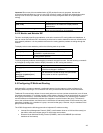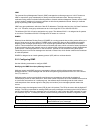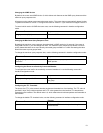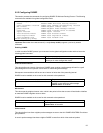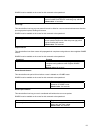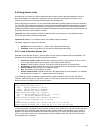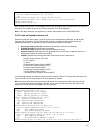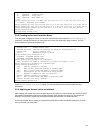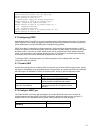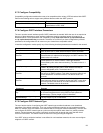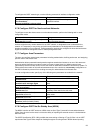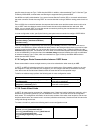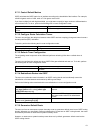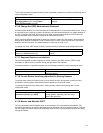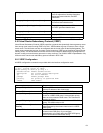
57
Router(config)# access-list 101 permit tcp 192.168.123.0 0.0.0.255 any eq 25
Router(config)# access-list 101 deny any
Router(config)# interface eth1
Router(config-if-eth1)# ip ?
access-group Apply an access-group entry
Router(config-if-eth1)# ip access-group ?
WORD access-list number or name
Router(config-if-eth1)# ip access-group 101 ?
in inbound direction
out outbound direction
Router(config-if-eth1)# ip access-group 101 out
Router(config-if-eth1)# exit
5.7 Configuring OSPF
Open Shortest Path First (OSPF) is an interior gateway protocol (IGP) designed expressly for IP networks.
OSPF supports IP sub-netting and tagging of externally derived routing information, as well as supporting
packet authentication and IP multicasting when sending/receiving packets.
OSPF works best in a hierarchical routing environment. The first and most important decision on OSPF
network is to determine area border routers (routers connected to multiple areas), and autonomous system
boundary routers. At a minimum, OSPF-based routers can be configured with all the default parameter
values, no authentication, and interfaces assigned to areas. If users intend to customize their networking
environment, they must ensure coordinated configurations of all routers.
To configure OSPF, complete the tasks in the following sections. After enabling OSPF, the other
configuration tasks are optional.
5.7.1 Enable OSPF
As with other routing protocols, enabling OSPF requires that you create an OSPF routing process, specify
the range of IP addresses to be associated with the routing process, and assign area IDs to be associated
with that range of IP addresses. Perform the following tasks, starting in global configuration mode.
Command Purpose
router ospf Step 1
Enable an OSPF routing process, which
places you in router configuration mode.
router-id router-id Step 2 Specify a routing process ID. A router ID is
a 32-bit number in dotted-decimal notation.
network prefix-length area
{area-ID | area-address}
Step 3 Define an interface on which to run OSPF
and specify the area ID or IP address for that
interface.
5.7.2 Configure ABR Type
The IC35516 OSPF conforms to the specifications in standard RFC2328. As there are a variety of
implementations that support OSPF, the OSPF configuration depends on different type of routers. To
configure OSPF on an Area Border Router (ABR), specify what type the router belongs to.
Command Purpose
abr-type {cisco | ibm | shortcut |
standard}
Specify a router (ABR) type.



